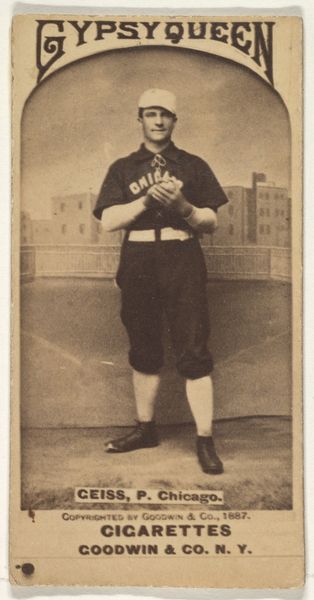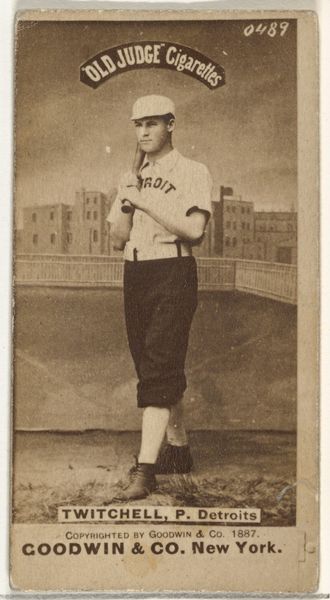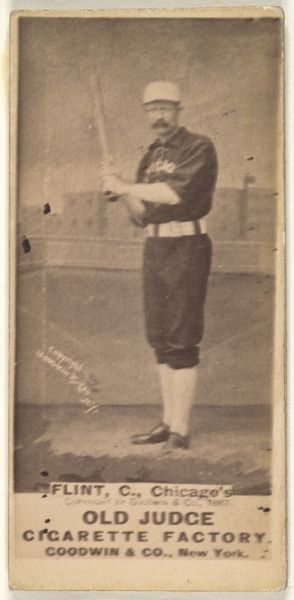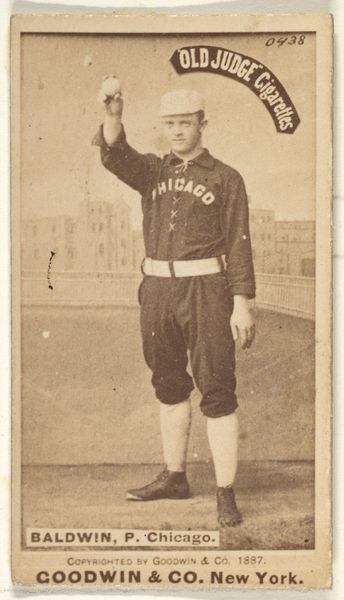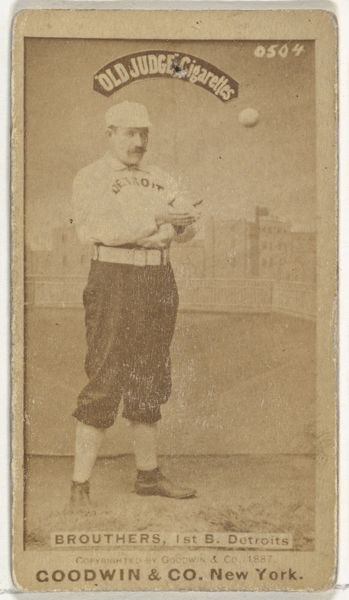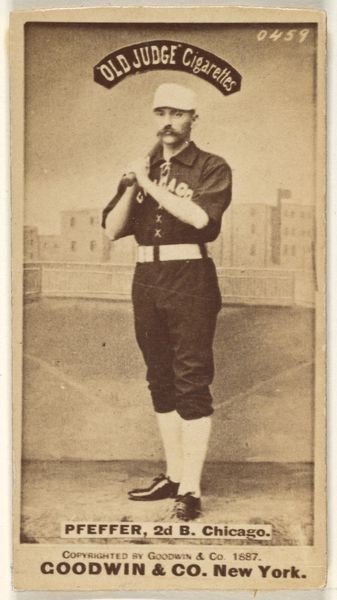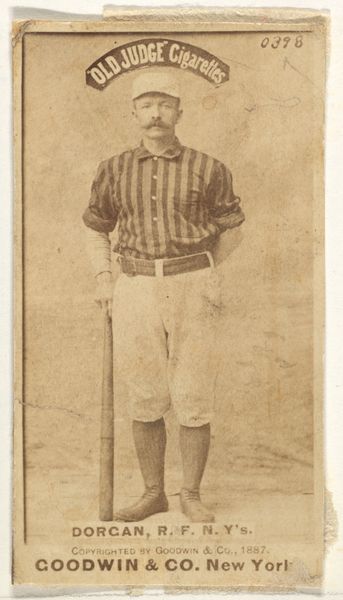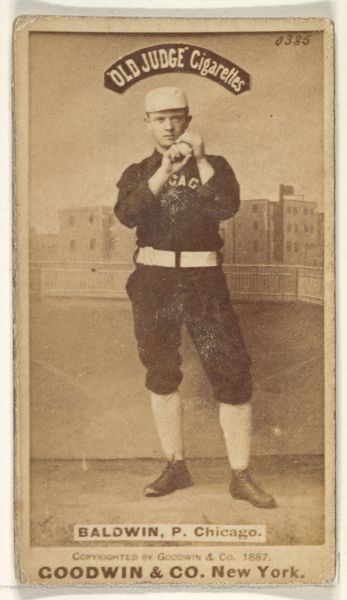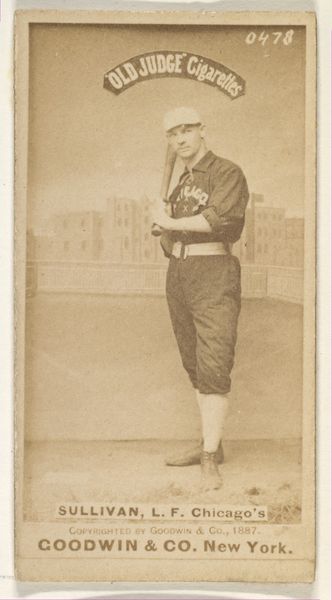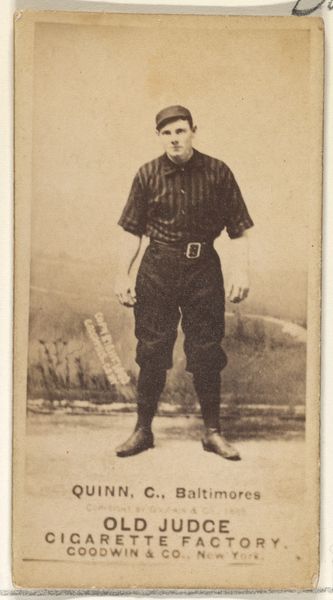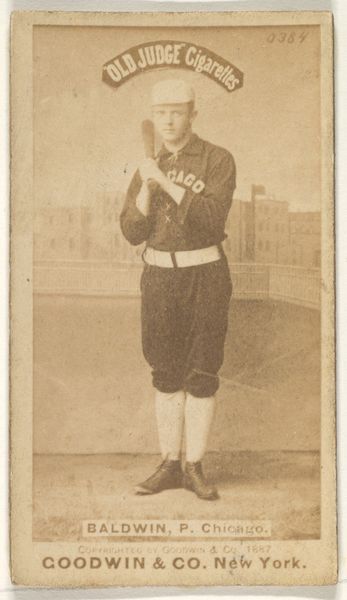
Ceiss, Pitcher, Chicago, from the Old Judge series (N172) for Old Judge Cigarettes 1887
0:00
0:00
print, photography, albumen-print
#
portrait
# print
#
baseball
#
photography
#
men
#
genre-painting
#
athlete
#
albumen-print
Dimensions: sheet: 2 11/16 x 1 3/8 in. (6.9 x 3.5 cm)
Copyright: Public Domain
Curator: This is a fascinating albumen print from 1887, produced by Goodwin & Company as part of the "Old Judge Cigarettes" series. It features Ceiss, a pitcher for the Chicago team. These cards were, of course, advertising premiums, and represent an early intersection of commerce and sport. Editor: My first impression is the stillness, the careful composition for a utilitarian item, really. The player's stance feels deliberate, posed, not captured mid-action as one might expect today. It’s less about the game, and more about crafting a presentable image for public consumption and trade. Curator: Exactly. Consider the social context of baseball at the time. It was solidifying its place as America’s pastime. Depicting players as respectable, almost heroic, figures contributed to its popularization. What are the class and race dynamics inherent in shaping a public image for working-class entertainment? Editor: Let's talk materials, because for me that opens up another important avenue for interpretation. An albumen print means using egg whites to bind the photographic chemicals to the paper, right? What's fascinating is that albumen, sourced from egg production, became instrumental in reproducing baseball stars for mass consumption and trading. There’s this curious relationship between domestic labor, food production, and the celebrity of athletes at the end of the nineteenth century. Curator: Absolutely. The choice of medium reveals so much about how images were disseminated and consumed within the socio-economic structures of the time. And note how this particular representation excludes so many... it promotes the specific masculine ideals, as it centers whiteness, further reinforcing prevalent power structures. Editor: I agree completely. And it makes me consider what a fan, presumably male, held as he unwrapped a new packet of cigarettes in 1887. Curator: What a lens, indeed, through which to reflect on themes of commerce, image-making, sport, gender and power that intersect still. Editor: And perhaps even reassess our contemporary values that continue to underpin sports and society itself.
Comments
No comments
Be the first to comment and join the conversation on the ultimate creative platform.
